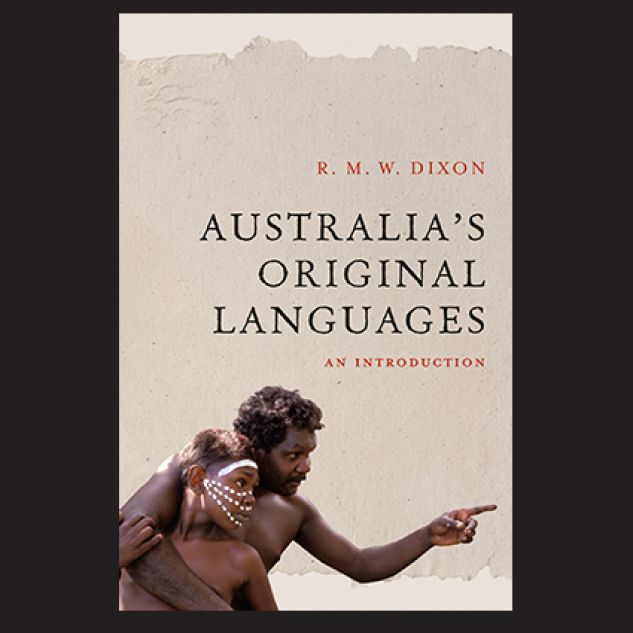College
College of Arts, Society and Education
Publish Date
13 August 2019
Related Study Areas
Preserving Australia’s unique cultural history
Indigenous languages continue to disappear at an increasingly alarming rate. To celebrate the International Year of Indigenous Languages, JCU Adjunct Research Professor R. M. W. (Bob) Dixon has written the first user-friendly guide teaching about endangered Indigenous Australian languages.
Before European settlement in 1788, more than 250 Indigenous languages — including 800 dialect varieties — were spoken across the continent. According to the Australian Institute of Aboriginal and Torres Strait Islander Studies, 231 years after European colonisation, 90 per cent of Indigenous Australian languages are endangered.
Bob’s book, Australia’s Original Languages, provides an uncomplicated introduction to over 30 Indigenous languages from across Australia. The book teaches the reader about the vocabulary, sounds, word building and grammar of different Australian Indigenous languages.


“There has never been a book for general readers that keeps key technical terms to a minimum,” he said. “My book gives all Australians, Indigenous and non-Indigenous, an idea of what the languages were like. I wanted to use my book to show that Australian languages are just as worthy of study as European languages. The book teaches the reader how to pronounce certain words, how language reveals social constructs, and how a language reflects the way people classify things around them.”
According to Bob, there has been a recent revival of interest in learning First Nations languages.
“Every language has its way of dealing with the world and the language encapsulates the culture,” he said. “Indigenous Australian languages have rich vocabularies and grammars that are as intricate as those in Latin and Greek. The Indigenous people are trying to recapture these languages because it helps to give them an idea about their heritage.”
Indigenous languages are a tool to communicate a person’s unique cultural history, traditions, memory and identity. Bob’s main motivation for writing the book was to help preserve Indigenous languages for future generations.
“Indigenous peoples are the traditional guardians of this land,” he said. “It’s extremely important to learn more about the original languages and cultures on the land in which we live.”
The roles and relationships of Indigenous languages
Australia’s Original Languages is a collation of over 50 years of Bob’s research. Bob said there was no evidence to show if the Indigenous languages originated from one or several different languages.
“The book talks about how the Indigenous languages are related across the continent,” he said. “The Indigenous languages have similar sound systems, consonants and vowels that would have been picked up during meetings, dances and marriages.
“However, the languages diverge so much that you can’t say that they belong to one family of languages. Each language has several different dialects. For example, there is one language spoken from Cardwell to Innisfail called Dyirbal but there were 10 different dialects.”
Throughout his career, Bob has worked closely with Indigenous Elders researching their unique culture, language and dialects. Most of his research has focused around studying Indigenous languages in north-east Queensland including: Dyirbal, Yidiny, Warrgamay, Nyawaygi and Mbabaram.
“I went to Murray Upper, near Tully and introduced myself to the people there and they adopted me into their kinship system and took me into their home and decided to teach me the language,” he said. “Most memorably, I have worked with the last speaker of Mbabaram over the range beyond Mareeba.”
Within the book, Bob explains how language relates to complex Indigenous kinship systems. A kinship system determines how people relate to each other and their roles, duties and responsibilities in the community, the land and ceremonial business.
“I found that the original nations around Cairns have a special speech tone, which is used for talking to someone who is a mother-in-law, father-in-law, son-in-law or daughter-in-law — you can't speak to them in a normal style, you have to use specific words for them.”

Featured researcher
Professor R. M. W. (Bob) Dixon
Adjunct Professorial Research Fellow
Professor R.M.W. Dixon has been a professorial research fellow at JCU’s Cairns Institute since 2008. Professor Dixon is a highly experienced linguist, having done fieldwork in north-east Queensland studying the Indigenous languages of Dyirbal, Yidiñ, Warrgamay, Nyawaygi, and Mbabaram as well as on the island of Taveuni in Fiji, where he studied the Boumaa dialect of Fijian, and in the Amazonian jungle with the Jarawara Indians.
Professor Dixon is also an expert on the English language, from the semantic principles of English grammar to nouns, adjectives, prepositions, and dictionary-making. In 2010-12, Professor Dixon published three volumes of work on basic linguistic theory which Oxford University Press described as ‘the triumphant outcome of a lifetime’s thinking about every aspect and manifestation of language and immersion in linguistic fieldwork’.